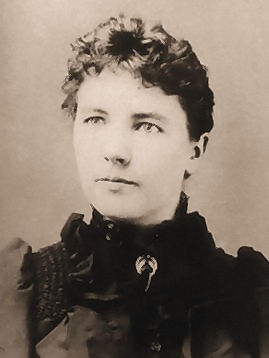Little Fairy on the Prairie October 15, 2017
Author: Beach Combing | in : Modern , trackbackBeach spends a lot of his time chasing fairies in eighteenth, nineteenth and twentieth century books. Because he doesn’t have an exceptional library to hand and because travel is so damn annoying he finds the best thing to do is buy books on the basis of emails from friends and readers; or ‘snippets’ on Google Books. This means that four or five score books arrive a year, are checked and often discarded almost instantaneously. The problem is that ‘fairies’ are everywhere and they can mean so many things to so many different people: the number of race horses and boats called ‘fairy’ for example also complicated matters considerably; fairy research today would have been a lot easier had the HMS Fairy never been built. However, it is important to record negatives as well as positives while chasing a story down and here is one such. Beach was recently told that American children’s story writer Laura Ingalls Wilder, author of Little House on the Prairie, believed in fairies. With some excitement he got Little House in the Ozarks, her collected journalism and found that there was, indeed a section, entitled ‘Have you seen any fairies lately?’ His hands became clammy as he turned the pages. However, there were just some platitudes about Father Christmas and a few bad poems: Beach says bad, actually he didn’t read the verse, but they ‘looked’ bad, one was called ‘The Fairy Dew Drop’ another ‘The Fairies in the Sunshine’ etc etc. Here are the prose platitudes with something half interesting woven in:
Have you seen any fairies lately? I asked the question of a little girl not long ago. ‘Huh! There’s no such thing as fairies’, she replied. In some ways the answer hurt me, and I have been vaguely disquieted when I have thought of it ever since. By the way, have you seen any fairies lately? Please do not answer as the little girl did, for I’m sure there are fairies and that you at least see their work. In the long, long ago days, when the farmers gathered their crops, they always used to leave a part of whatever crop they were harvesting in or on the ground for the use of the ‘Little People’. This was only fairy, for the ‘Little People’ worked hard in the ground to help the farmer grow his crops, and if a share were not left for them, they became angry and the crops would not be good the next year. You may laugh at this old superstition, but I leave it to you if it has not been proved true that where the ‘Little People’ of the soil are not fed the crops are poor. We call them different names now –nitrogen and humus and all the rest of it – but I always have preferred to think of them as fairy folk who must be treated right.
So fairies are a farming metaphor… More interesting is what Laura Ingalls Wilder meant by ‘long, long ago days’. Had she read something about gifts for the fairies: or had she heard about it in the agricultural communities where she grew up or lived in the Dakotas, Kansas, Missouri and Wisconsin: drbeachcombing AT yahoo DOT com.
31 Oct 2017, Bruce T: When Laura Ingalls was growing up that entire region was being overrun by Scandinavian settlers by the thousands. To this day many of those towns are populated by people from a certain Scandinavian country. For example, my girlfriend, being of Danish descent lived on a farm outside of a Danish town, the next town down the road was Swedish, etc…. As most of these people had been farmers in the country of origin, they were people of the soil and brought their beliefs with them. Up until about 75 years before this wave, the river bottoms of the area had been populated Native agriculturists, who had lived for several centuries in large towns of mound like earth lodges on the third river terraces above the flood line, the Mandan being the most widely known. With the post-Lewis and Clark fur trade on the Missouri River, European diseases ripped through these densely packed towns on the main river and tributaries, decimating these cultures and ending their lifeways. when the Scandinavians, (and the Ingalls’) reached these valleys to farm, all that was left was the collapsing earth lodges/mounds and overgrown old fields. Mounds and who dwelt in them had a long history and folklore attached in Scandinavia. (This is the same region the Kensington Rune Stone was created in.) My guess, and it’s just that, is Ingalls picked up her fairy beliefs from her Scandinavian playmates growing up. Depending on the crops grown by the natives before them, perhaps some of the fields were played out while others hadn’t suffered, thus the crop beliefs. As an example, Eastern Virginia’s Tidewater was burnt out by heavy plantation tobacco cultivation in the 17th cen. and didn’t recover for decades, the infamous “Battle Of the Wilderness” in the Civil War being fought out in mature forest that covered what had been mid-17th century tobacco plantations, the demands of tobacco rendering much of the region unfit for other agricultural crops for nearly two centuries.



